How to start your own cutting garden, by three of Britain's most successful flower growers
Nothing beats homegrown flowers for beauty, variety and scent. Tiffany Daneff asks three British growers for the best advice on starting your own cutting garden.

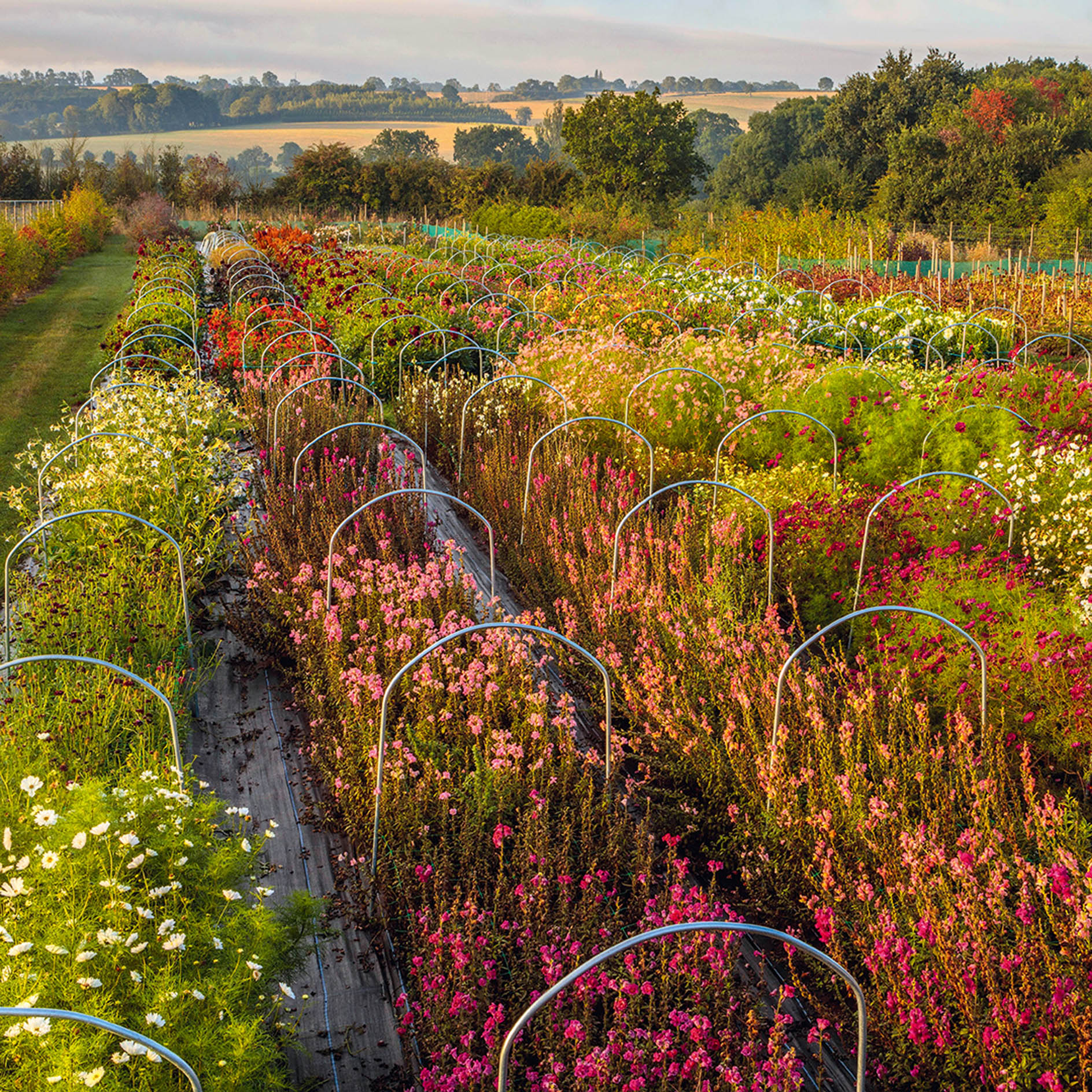
[Jump down to the best plants to grow in a cutting garden]
Five tips for growing a cutting garden, by Georgie’s Garden Flowers of Shropshire
- 1. If growing on a large scale, consider laying out plants on a grid, allowing space for a tractor in between rows. At Flower and Farmer, perennial beds are arranged in blocks 20ft by 12ft, with eight rows each
- 2. Install drip-line irrigation to counter droughts and increase efficiency
- 3. Plant into weed-suppressing fabric
- 4. Tulips can be lifted and stored with the bulb on for up to five days (without a chiller) to prolong their use
- 5. Grow a good variety of flowers so that there is always something to pick, whatever the weather
The idea of setting up a flower-growing business from home struck Georgie Fordham when she was sitting on a beach in Cornwall in the summer of 2020. It occurred to her how hard it was to buy nice flowers locally, as opposed to imported gerberas and scentless roses. ‘I loved the idea of British-grown, seasonally available flowers, so, when I got back home, then Wappenham in Northamptonshire, I put in an order for loads of tulip and narcissus bulbs and planted them in the garden, to supplement the herbaceous perennials in the borders.
That winter, she took a two-week intensive floristry course with Judith Blacklock in Knightsbridge, followed by a six-week online course with the inspirational American florist-grower Erin Benzakein, at Florets Farm in Washington, US.
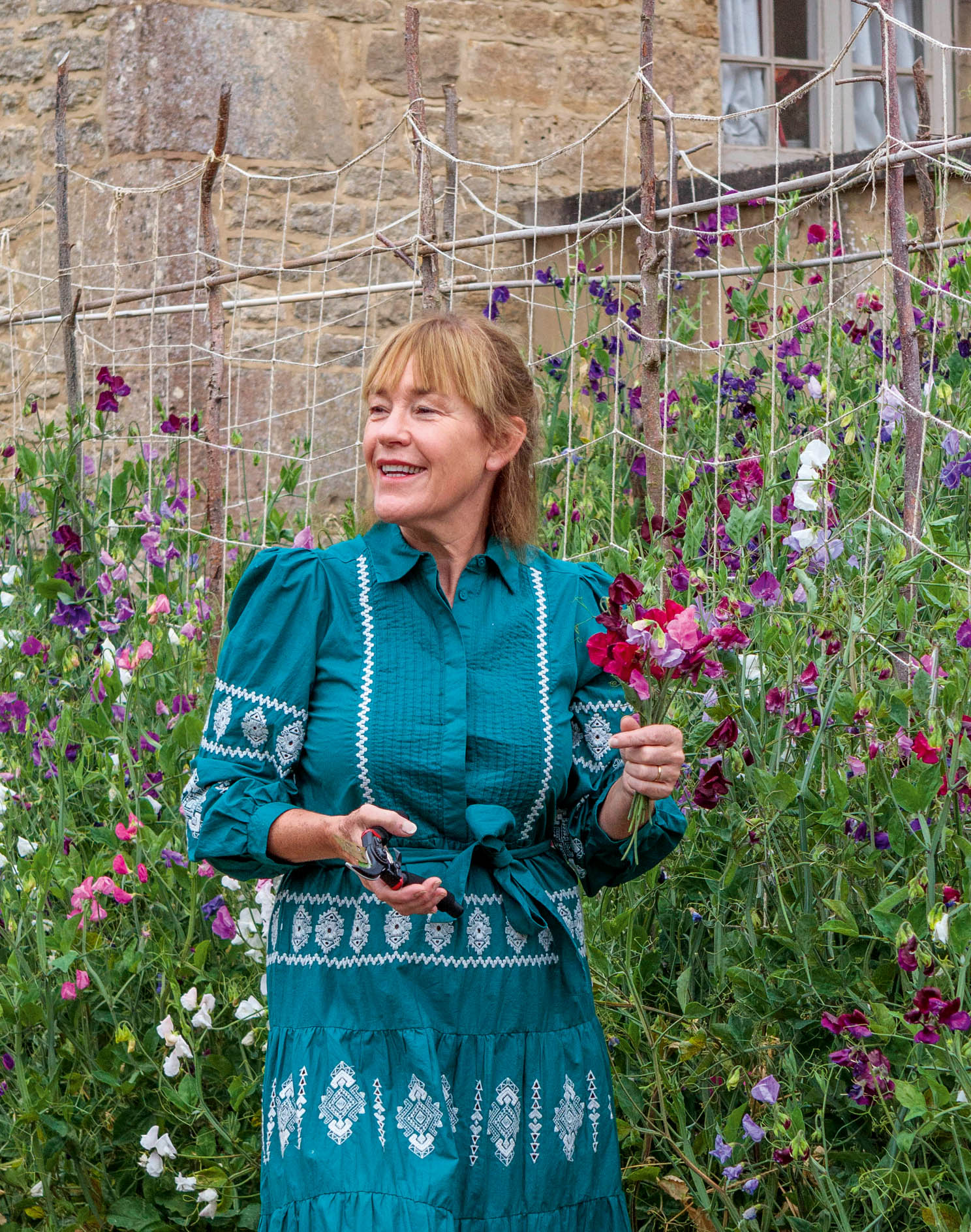
Mrs Fordham sold her first bunches in February 2021. ‘I emailed the husbands and boyfriends of friends to see if they’d like to order Valentine’s flowers and ended up with 28 orders, which I hand delivered within a 25-mile radius of our home, as well as in London.’
As new requests came in, she needed more flowers than she could grow and as a result, in the spring of 2021, she contacted Flower and Farmer in the nearby village of Guilsborough. ‘Instead of flowers that have come from overseas and all look the same, theirs are fresh and individual, every bloom looks different.’ Then she discovered Anna Brown, who was growing flowers in a field not far away in Oxfordshire.
Following a move to Shropshire, Mrs Fordham will be focusing on funeral flowers, an area that has been slower to adapt to using seasonal British flowers, and is planning a series of face-to-face events on making wreaths and tied bunches. 07712 890222; www.georgiesgardenflowers.com
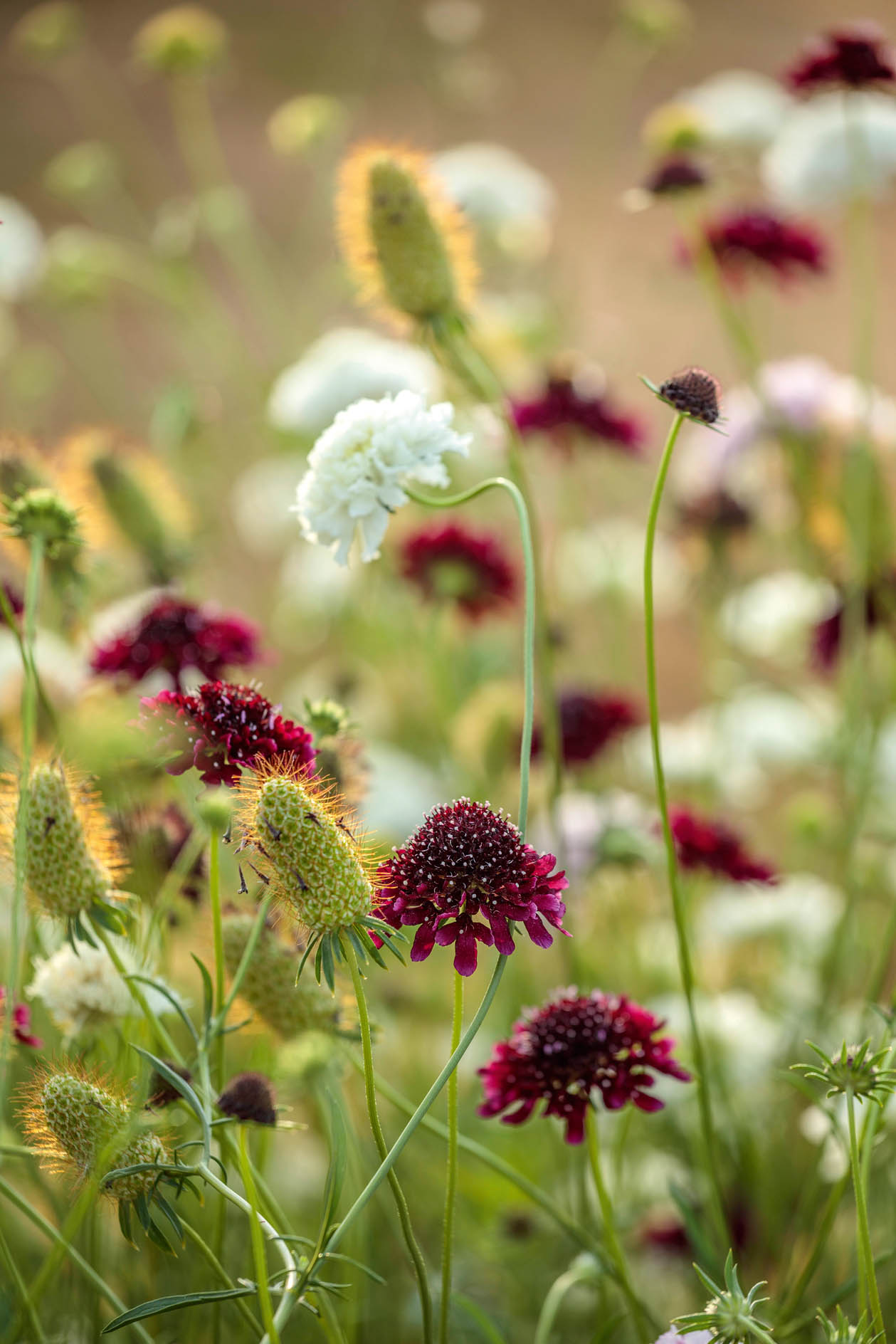
'Embrace ephemeral, seasonal beauty' — Flower and Farmer, Northamptonshire
Milly Naden-Robinson’s dream of turning her love of flowers into a sustainable business became a reality in 2018, when she joined forces with her aunt Jo de Nobriga, a knowledgeable and practical plantswoman. Now, the pair sells buckets of seasonal flowers, as well as hand-tied bouquets and dried flowers by post.
Exquisite houses, the beauty of Nature, and how to get the most from your life, straight to your inbox.
‘Our raison d’etre is to embrace the ephemeral, seasonal beauty of British-grown flowers,’ says Ms Naden-Robinson. ‘This is matched by a commitment to developing eco-friendly practices in farming and floristry.’ Consequently, the company’s flowers are not treated with pesticides or fungicides.
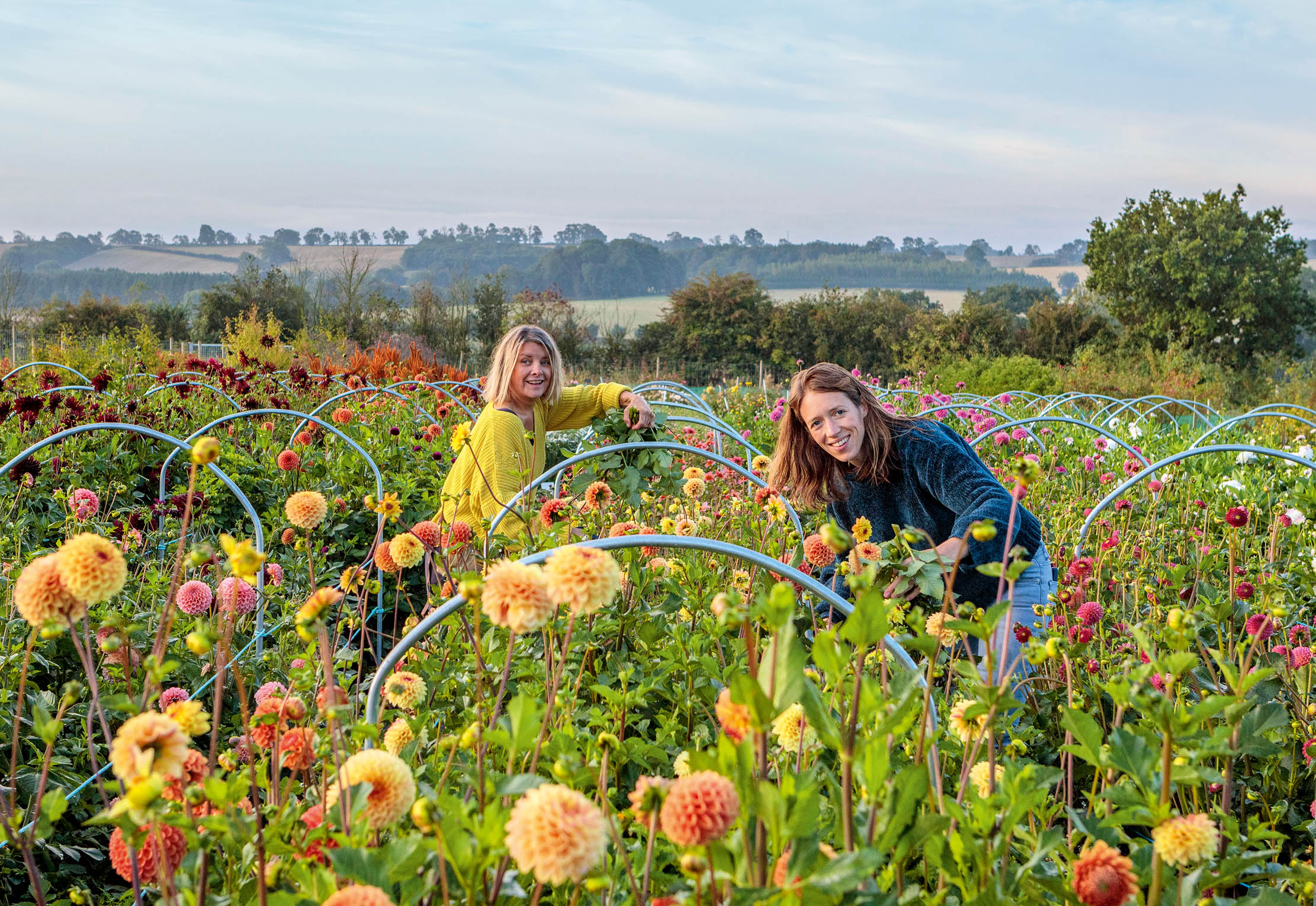
After much planning, a small paddock on the 500-acre family farm was fenced off, ploughed into strips and enriched by tons of well-rotted mulch. This area now sustains hardy annuals, perennials and grasses, with the addition of two polytunnels for protected growing of tender plants. ‘It was a revelation to see such good soil quality after 60 years of being set to grass,’ says Jules Allerton, a third member of the team. A second 2½-acre plot is dedicated to shrubs and perennials. ‘When we started,’ adds Ms Allerton, ‘we didn’t use enough landscaping fabric; now, almost everything goes into that.’ www.flowerandfarmer.com
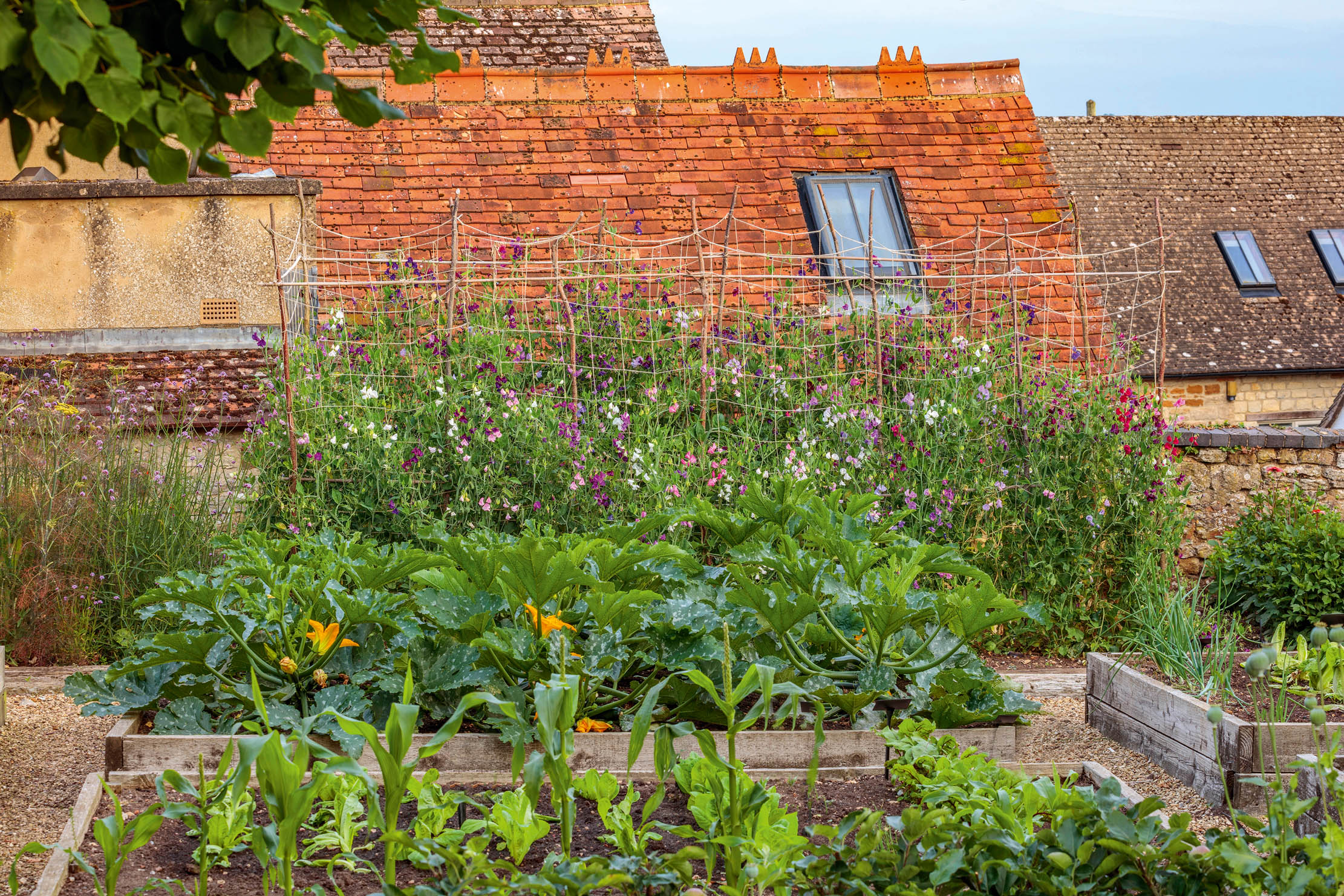
'Shoots take longer than tubers and you get fewer blooms — but they are much more reliable' — Anna Brown, Oxfordshire
Anna Brown grew up on a small raspberry farm near Seattle in the US and, when travelling, met her British husband, Robbie, a carpenter. The couple settled in Wardington in Oxfordshire in about 2012. As luck would have it, her father-in-law had a field that abutted the garden belonging to Wardington Manor, where Bridget Elworthy was setting up a cut-flower business, The Land Gardeners, with Henrietta Courtauld.
After several years working as a gardener at the manor, Mrs Brown set up on her own in 2018 on part of her father-in-law’s field, selling only to florists and Covent Garden Market. ‘We had to spray the thistles to begin with,’ she says, ‘but have been chemical-free since.’ As there is no polytunnel on the site, her partner, local man Philip Watts, sows many seeds in his greenhouse, which is a great boon.
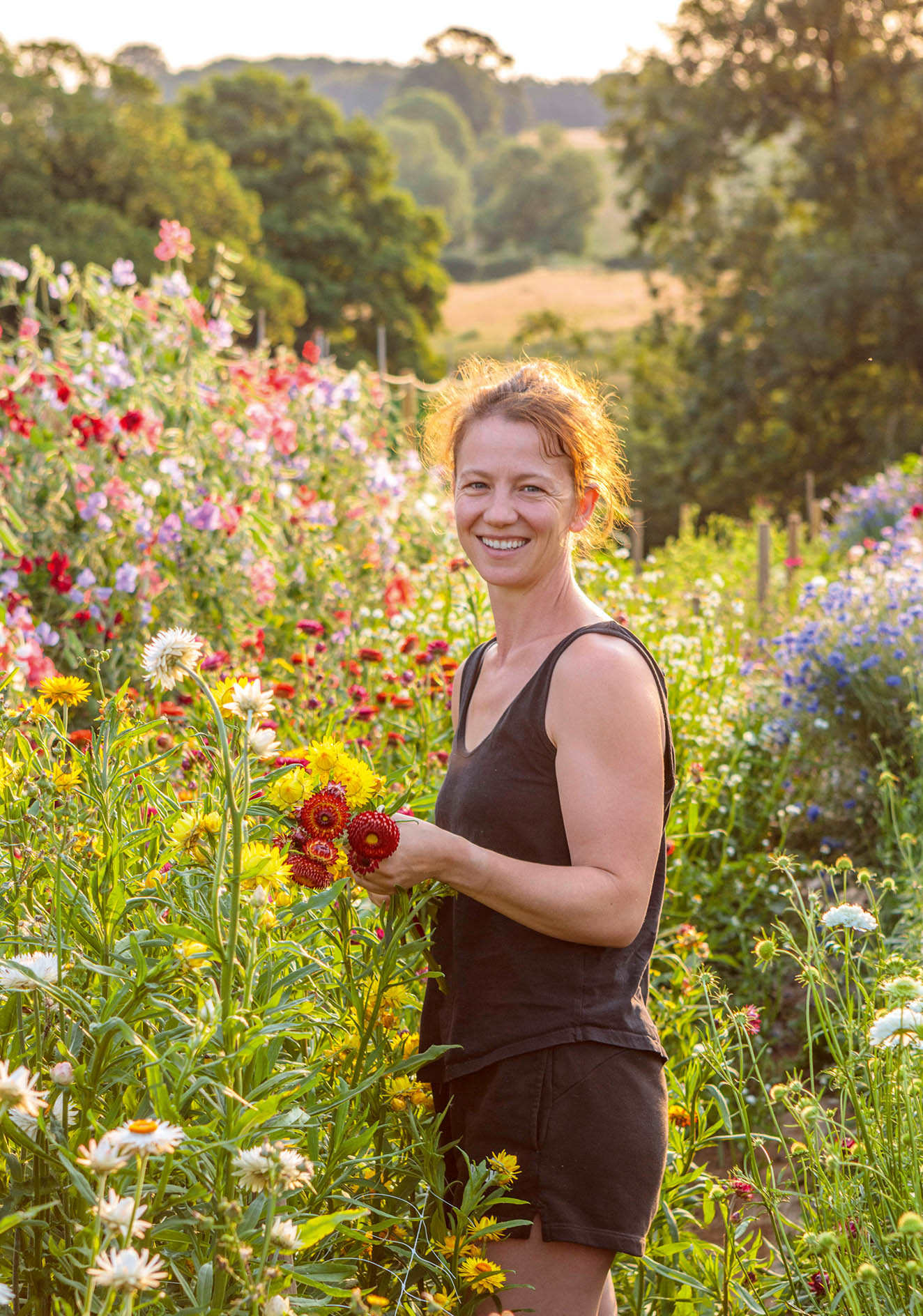
The flower year starts with tulips. Last summer, Mrs Brown ordered 12,000 bulbs of 200 varieties, mainly Parrot, Peony and Double tulips. From May to July, the farm will be producing mainly cottage-garden favourites, together with stalwarts such as peonies and delphiniums — and then come the dahlias. These are bought as shoots from Halls of Heddon in Newcastle upon Tyne. ‘Shoots take a bit longer to get going than tubers and you get slightly fewer blooms but they are much more reliable and true to form.’
The dahlias are grown in 2ft 6in-wide beds a yard apart and staked every three yards. Stretched between the stakes is 6in plastic netting, which holds the plants securely.
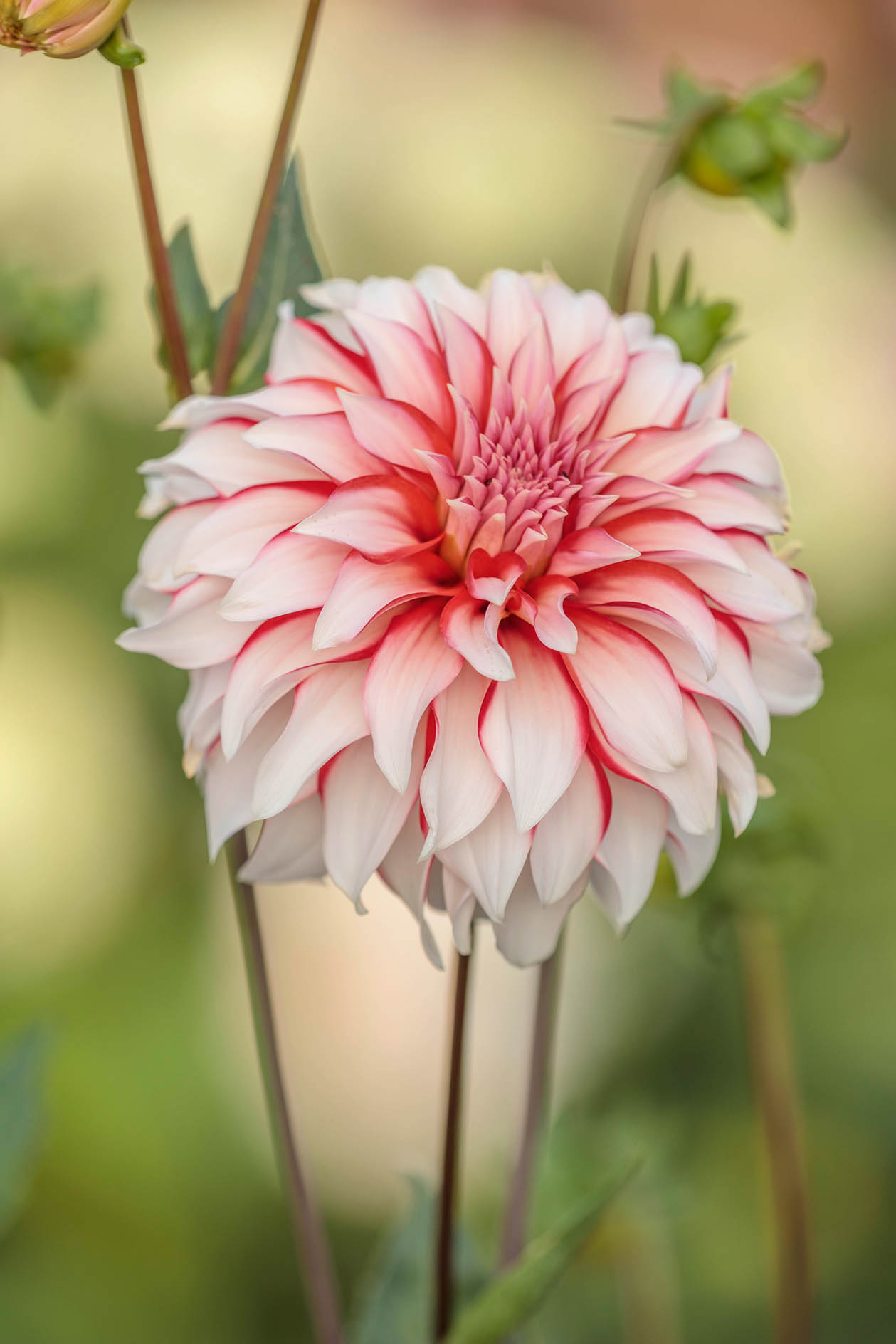
The dahlia beds are manured and the mature seedlings given a seaweed feed to get them off to a good start. ‘Over the summer, it’s non stop — we’re living off cheese and crackers. But from December to February, I take the foot off the gas and there’s actually time to cook a meal.’
When the sun rises over the field and the flowers are blooming, the sight makes up for all the hard graft.
07871 331340; www.brownflowers.co.uk
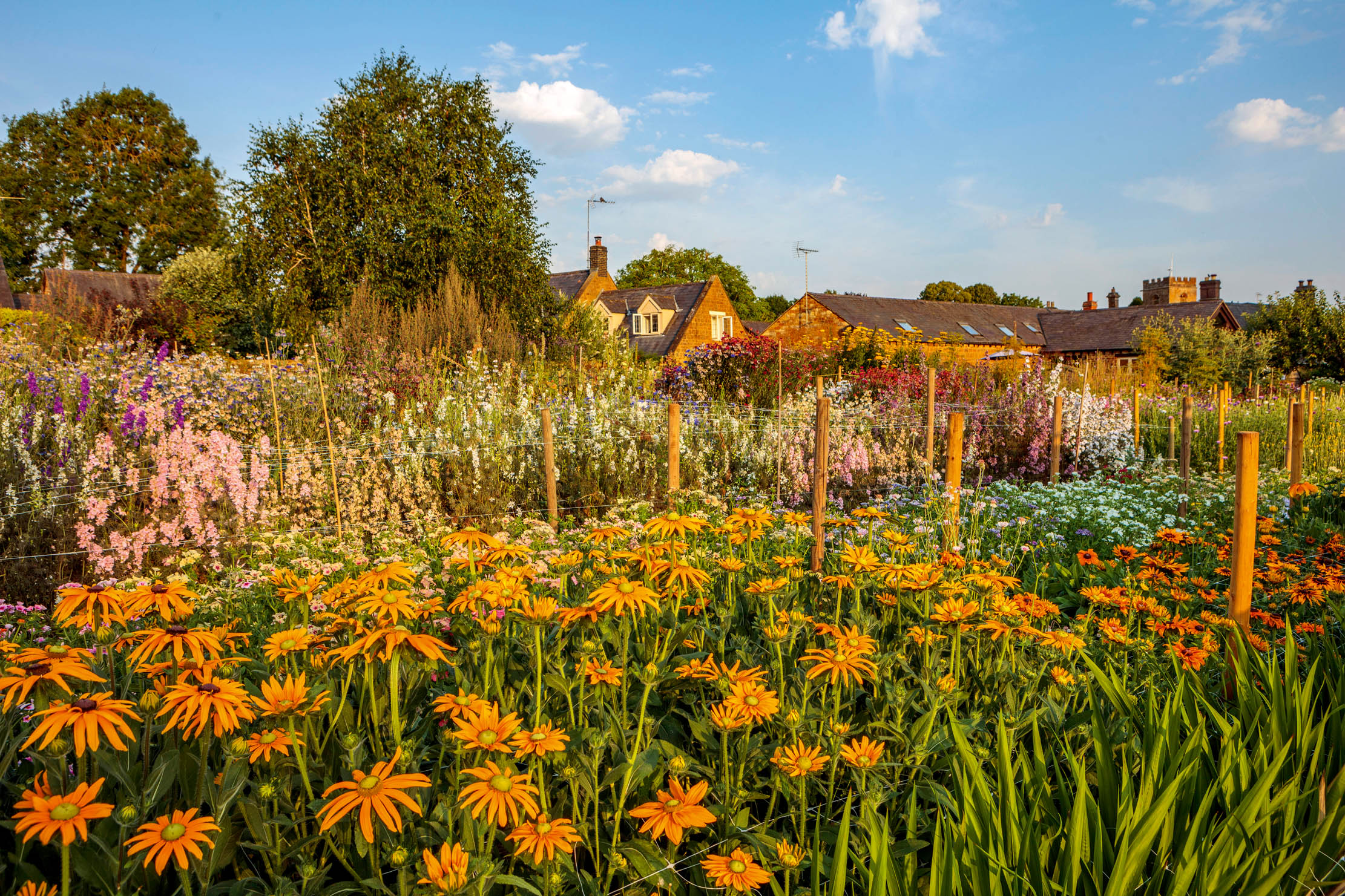
Find out more about growing a cutting garden
Courses Judith Blacklock Flower School, 4–5 Kinnerton Place South, London SW1 (020–7235 6235; www.judithblacklock.com) and online with Floret Flowers, Washington, US (www.floretflowers.com)
Books A Year in Flowers and Discovering Dahlias by Erin Benzakein; Buying and Arranging Cut Flowers: the essential A—Z Guide by Judith Blacklock
Cutting-garden membership association Flowers from the farm, with members across the UK (www.flowersfromthefarm.co.uk)
Best plants to grow in a cutting garden
All the plants below come recommended by our experts.
Best plants to grow in a polytunnel
Italian ranunculus Admired for growing big and strong
Papaver nudicaule Iceland poppies come in a range of lovely mixed colours
Best plants to grow for cut flowers
Centaurea montana and C. montana var. alba Perennial cornflowers that keep going all season if regularly dead headed and cut back
Scabiosa caucasica var. alba Semi-evergreen perennial, with pure-white flowers for up to four months
Aquilegia Great all-round cottage-garden plant
Phlox paniculata Try pearly-pink ‘Monica Lynden-Bell’ and vivid ‘Peacock Cherry Red’
Sweet peas Sow earlier for longer stems
Antirrhinum Highly recommended is the double-flowered Madame Butterfly range. The Potomac Series copes well with heat. Buy plugs, as seed is unreliable
Penstemon Try scarlet P. barbatus ‘Jingle Bells’ and the wine-dark foliage of P. digitalis ‘Husker Red’
Lavatera trimestris ‘Dwarf Pink Blush’ Lasts ages in a vase
Ammi visnaga An indispensable mixer
Gladiolus ‘The Bride’ Its pure-white starry flowers should overcome any anti-gladdie prejudice. Also try acid-green ‘Evergreen’ and orangey-brown ‘Bimbo’
Acidanthera A beautiful, scented autumn bulb that deserves to be better known
Oenothera lindheimeri (previously gaura) Treat this like an annual and sow from seed each year
Never forget the eternally popular roses, delphiniums, larkspur and peonies, followed later by hydrangeas (always cut stems at the base), sunflowers (try the lovely terracotta-brown Infrared F1), dahlias (avoiding top-heavy blooms), heleniums and rudbeckias
Plants that are good fillers
Tellima grandiflora Creamy flowers in late spring/early summer
Mathiasella bupleuroides Green bracts from April to June before turning pink
Spiraea arguta (bridal wreath) As its name suggests, this is covered with tiny white flowers in May
Philadelphus For scent
Lunaria Beautiful green foliage followed by dried seedheads
Perennial gypsophila Try ‘Bristol Fairy’
Feverfew Prolific and perfect with so many flowers
Francoa sonchifolia Summer-flowering evergreen perennial
Cosmos bipinnatus There’s a huge and ever-growing selection of these late-summer stars. Deadhead them in the vase to encourage buds to open
Viburnum Red-tinged foliage and berries in late summer
Best plants for great foliage
Pennisetum orientale ‘Karley Rose’ A perennial grass with deep rose-pink flowers
Annual grasses These keep better than perennial kinds. Try Pennisetum villosum, P. thunbergii ‘Red Buttons’ and Panicum elegans ‘Sprinkles’
Salix gracilistyla ‘Mount Aso’ A pink pussy willow with silvery-blue foliage
Herbs Lemon balm, mints, sage and rosemary
Artemisia For the feather-cut silvery leaves
Raspberries Increasingly popular summer foliage plant
Euphorbia Try E. oblongata and E. stricta
Alchemilla mollis Keep cutting it back to produce new growth
Bupleurum rotundifolium ‘Garibaldi’ For extra stem length
Previously the Editor of GardenLife, Tiffany has also written and ghostwritten several books. She launched The Telegraph gardening section and was editor of IntoGardens magazine. She has chaired talks and in conversations with leading garden designers. She gardens in a wind-swept frost pocket in Northamptonshire and is learning not to mind — too much — about sharing her plot with the resident rabbits and moles.
